Pros and cons of using tiles in the hallway
Decorative tile is today recognized as the best material for finishing the floor in the entrance hall of a city apartment. The paved floor has its own characteristics:
| Benefits | disadvantages |
|---|---|
| Strength and wear resistance: it serves for a long time, it tolerates loads and exposure to detergents. | Glossy tiles have a high slip index, so a matte type of material is suitable for the floor in the hallway. |
| Fire resistance. Makes it possible to install a warm floor. | Rapid contamination of a relief or light coating. |
| Hygiene and moisture resistance. Does not absorb extraneous odors and grease, prevents mold. | The surface of the tile floor is quite cold, it is not recommended to walk on it without shoes. |
| Products are relatively easy to restore: in case of damage, you do not need to completely change the coating. | Low sound insulation. |
Which tile to choose in the hallway on the floor?
The aesthetic task of the floor in the corridor is to be a harmonious background for the interior, not to spoil it. The choice of material largely depends on the area of the room. Tile happens:
- Square
- Rectangular
- Hexagonal
- Curly
- Metlakhskaya
Large square tiles in a small corridor will only emphasize its small size. A long narrow hallway will be expanded by a striped floor made of tiles laid perpendicularly. In a spacious corridor, you can fully express your creativity. Both figured tiles and multifaceted metlakh tiles in the form of mosaics will look luxurious.
Types of floor tiles for the hallway
Today, environmentally friendly modern materials are used for its production. Three types are most common on the construction market:
- Ceramic. A large share in its composition isburnt clay. Such a product retains its color perfectly, but the tile is quite fragile, so for the hallway it is better to find another coating.
- Porcelain tile. It is based on clay with the addition of granite chips. Differs in special durability and waterproof. The design allows you to accurately simulate natural materials.
- Quartz vinyl. For its manufacture, quartz sand is used, due to which the properties of the finish are close to artificial stone, and polyvinyl chloride, which acts as a bonding adhesive. Its main advantages are extraordinary wear resistance and durability.
The photo shows a hallway with a glossy ceramic coating. Brown accents harmonize with decorative elements and furniture of the same color.
Layout options for tiles on the floor
There are four main layout methods.
- The simplest is the classic version, when tiles on the floor in the hallway are laid parallel to the walls, in even rows. Such a floor looks solid, concise and at the same time saves time and materials.
- The second way of laying out is diagonal. This method well masks the unevenness of the floor, looks attractive and visually expands the hallway space.Unfortunately, laying diagonally is a very painstaking job and consumes a lot of materials when cutting.
- The third version of the layout is “sideways” or “offset”; here, rectangular products are used for the floor in the hallway. This masonry resembles a brick, used to simulate natural materials.
In the photo there is a hallway with a classic version of the calculation.
The fourth way of laying is the herringbone. This method is used to simulate parquet and is suitable for narrow rectangular tiles. With the simplicity and originality of the calculations, there is one more indisputable advantage - a minimum of waste.
In the photo there are two ways of laying - "unscrewing" and "herringbone". Visually, the coating does not differ from parquet at all.
The color of the tiles in the corridor
The choice of floor tiles in the hallway is of great importance for the perception of the interior as a whole. Its color scheme is so diverse that the design is limited only by taste preferences and imagination of the owner of the apartment.
White
White gloss looks elegant and combines with any shades. The shining tile reflects light and expands space. But for the corridor it is too slippery, and on products with a rough surface and light grout, the dirt will be more noticeable.
In the photo there is a white tile at the entrance, combined with walls and light wood.
Black
The corridor with the subfloor should be spacious enough, otherwise it will narrow the space even further. Damage is noticeable on such a floor. Therefore, black tiles are often combined with white, stacking in a checkerboard pattern.
Gray
The most popular and winning option for the hallway, it is in harmony with any wall decoration. It is not so noticeable scratches and dirt.
Beige
Beige refers to neutral, warm colors. Such a floor in the corridor is more likely to serve as a background for the situation than to attract attention.
Blue
A specific choice, therefore, is more common in two-tone flooring.
In the photo, a contrasting blue border favorably complements the ornament on a white background.
Red
This color in the hallway is more often used in combination with white, or as part of ornaments of muted tones: pink, burgundy.
Floor tile design
Today, the technology of manufacturing flooring from porcelain stoneware allows you to apply any pattern to it. This helps simulate wood surfaces and achieve maximum resemblance to laminate panels.
In the corridor, the “wood” and “laminate” flooring looks stylish and expensive, and also combines all the advantages of a tiled and wooden floor. The color scheme is really wide: to decorate the hallway, you can find samples with imitation of aged wood or brushing, oak of different tones from light brown to dark wenge.
A special place in the range of ceramic products is occupied by tiles imitating marble, granite, or onyx: its natural texture looks like a natural stone. In the hallway, this noble texture looks particularly elegant.
In the photo, a matte wood-like coating, similar to wax spraying. Also, manufacturers offer a glossy finish to simulate varnish.
Patchwork-style products are becoming increasingly popular: this is a patterned tile resembling a patchwork quilt. The multi-colored floor in the corridor fits perfectly into the Provence or Scandi style and enlivens the interior.
Hexagon tiles reminiscent of bee honeycombs are also successfully used in the decoration of the hallway.
Photo of floor tiles with a pattern
Currently, designers are creating entire collections with various images on porcelain stoneware. Thermal prints are striking in their detail.
A popular trend today is products with ornaments. They spread only a part of the corridor area, creating a kind of carpet pattern.
The photo shows the original floor, where a neutral tile is laid around a bright pattern.
Clear geometric ornaments give the atmosphere of the corridor a severity and a certain aristocracy.
The photo shows a stylish combination of rhombs of different colors.
Corridor Combined Floor Examples
Such a floor in the hallway looks not only spectacular, but also serves practical purposes: because of its strength, the tile at the entrance protects the less wear-resistant coating from the effects of street dirt. In addition, the transition of materials from one to another zones the space of the corridor.
Tiles and parquet
Complex, but very interesting, is the combination of hexagonal "honeycombs" and natural wood. The flexibility of the parquet allows you to join two, at first glance, incompatible material.
Tile and linoleum
This type of docking is less costly and troublesome. You can trim linoleum in different ways, for example, in a wave or a semicircle. To unify the space and eliminate the floor difference in the corridor, a metal door is usually used.
In the photo there is a ceramic finish at the threshold and linoleum laid in the rest of the hallway.
Tile & Laminate
This combination is the most reliable and durable. Facing in the corridor with tiles and laminate harmoniously fits into a different style of interior.
What does tile look like in various styles?
Due to its diversity, ceramic coating is universal for all styles.
Lovers of the loft prefer the imitation of a wood-like floor (often aged) in the corridor. For minimalism, a tile with a laconic pattern is characteristic - white, gray, with a concrete texture. Sexual products imitating natural stone emphasize the sophistication of the classics.
Pictured is a loft-style corridor with patterned tiles in black and white.
In the Scandinavian style, the most popular patchwork decoration is now. High-tech enthusiasts choose a modern floor pattern in the hallway, emphasizing the smooth lines of furniture and decor.
Photo gallery
Tile in the hallway is not inferior to other flooring either in terms of performance or beauty. It retains its attractiveness throughout its entire service life.

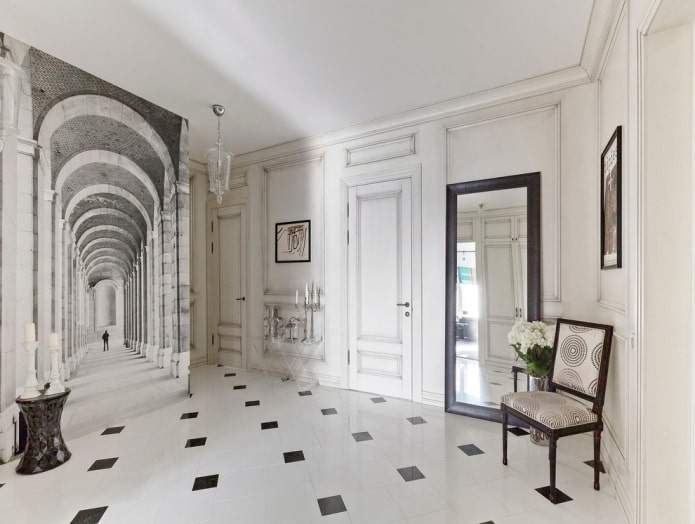
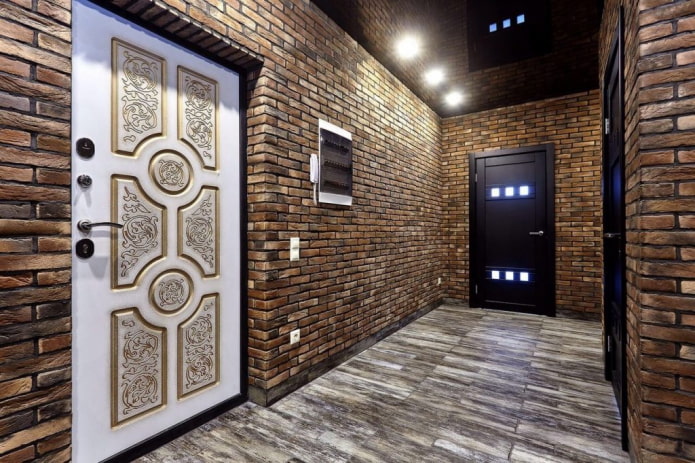
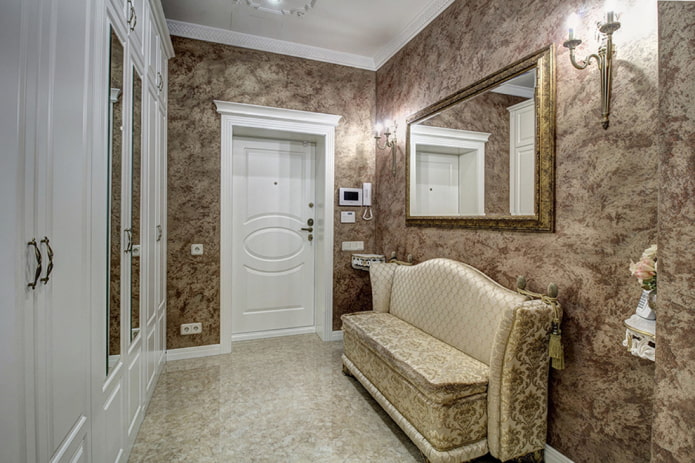
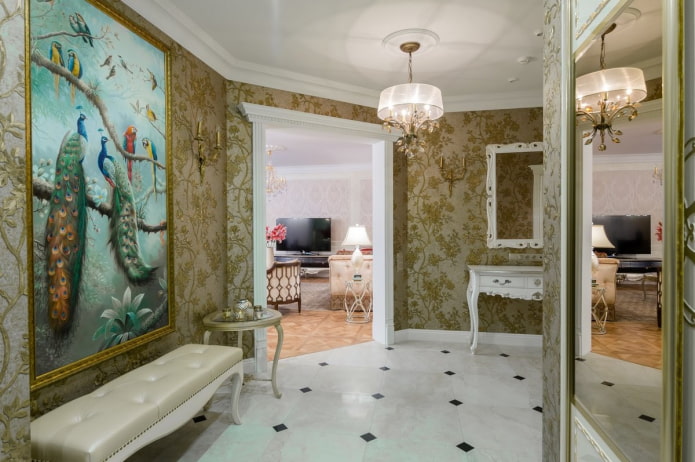

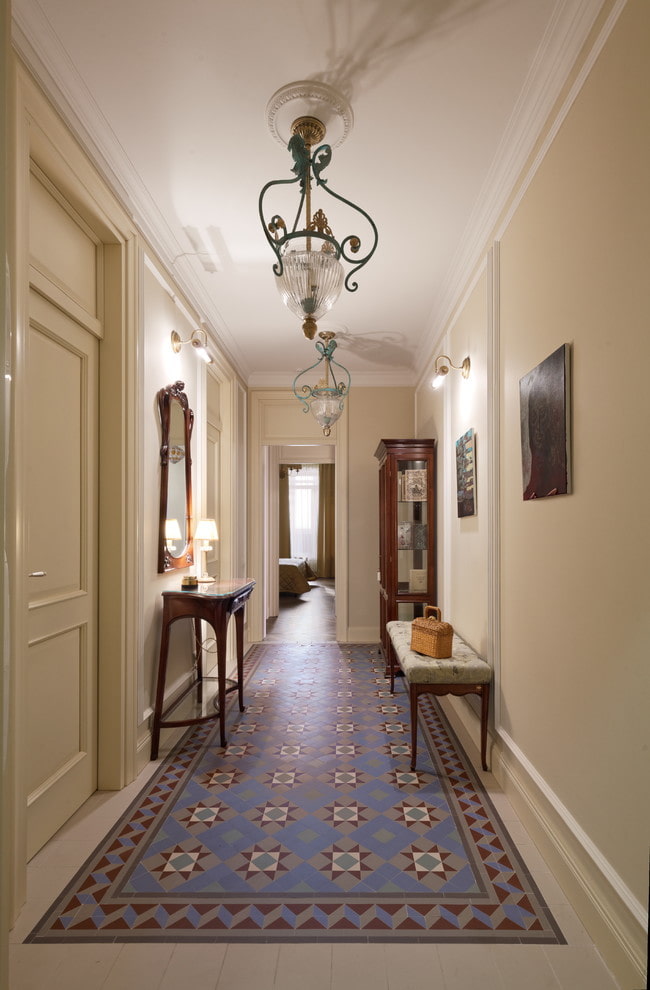
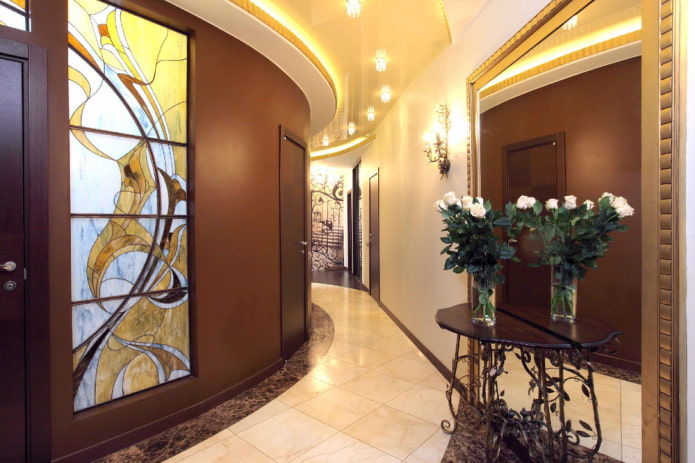
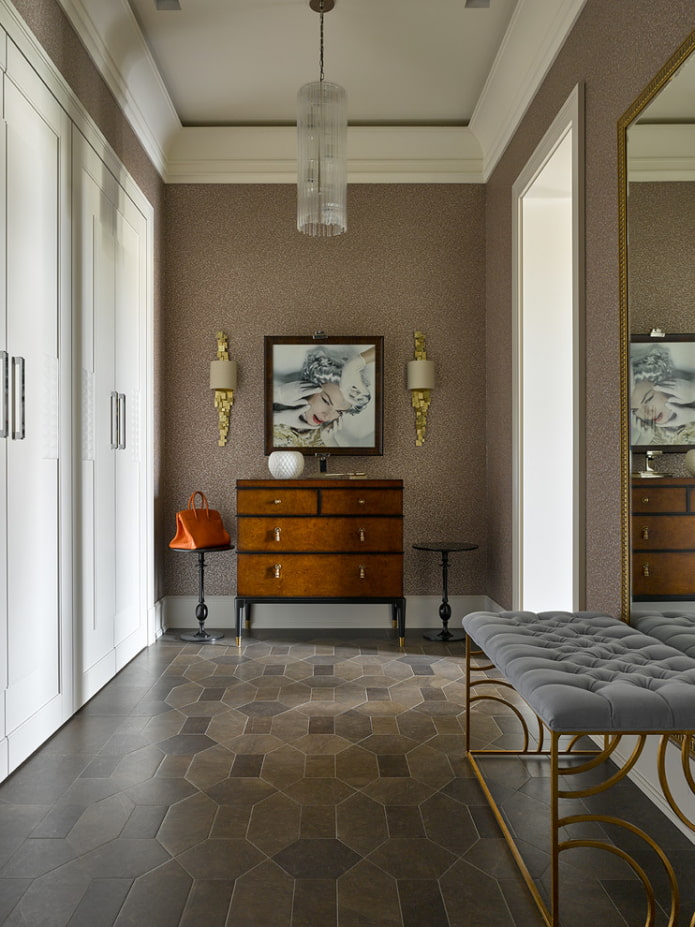
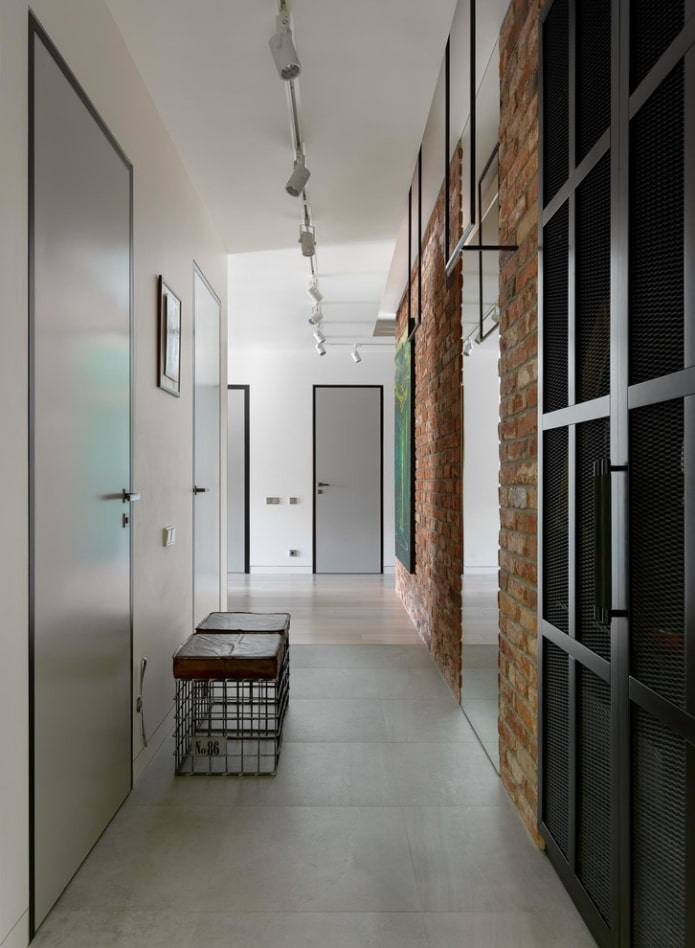

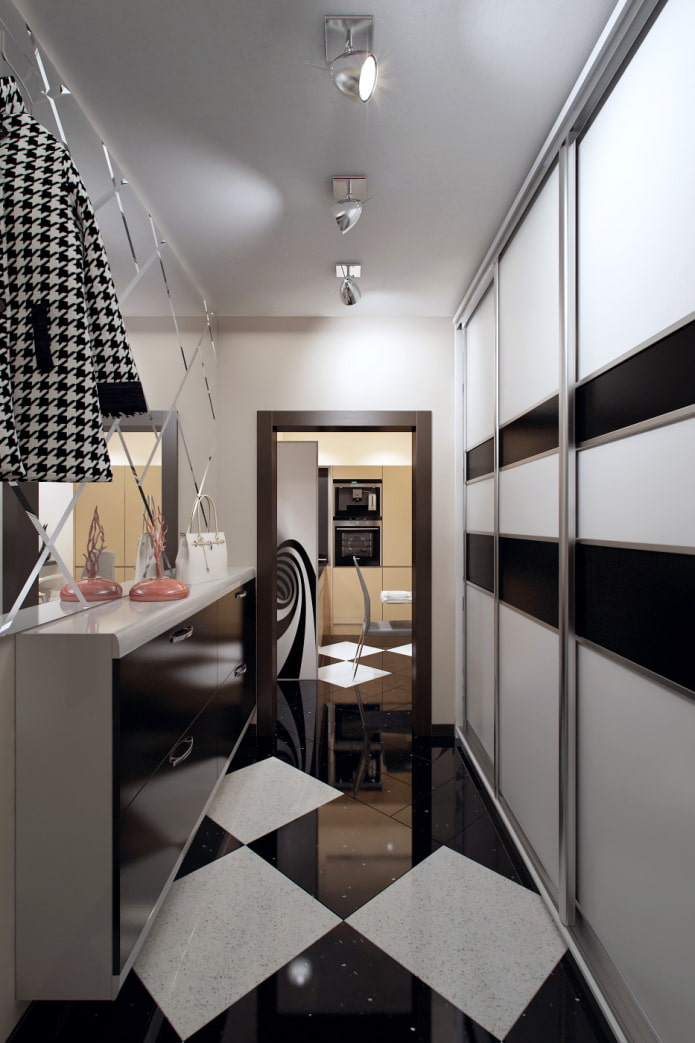
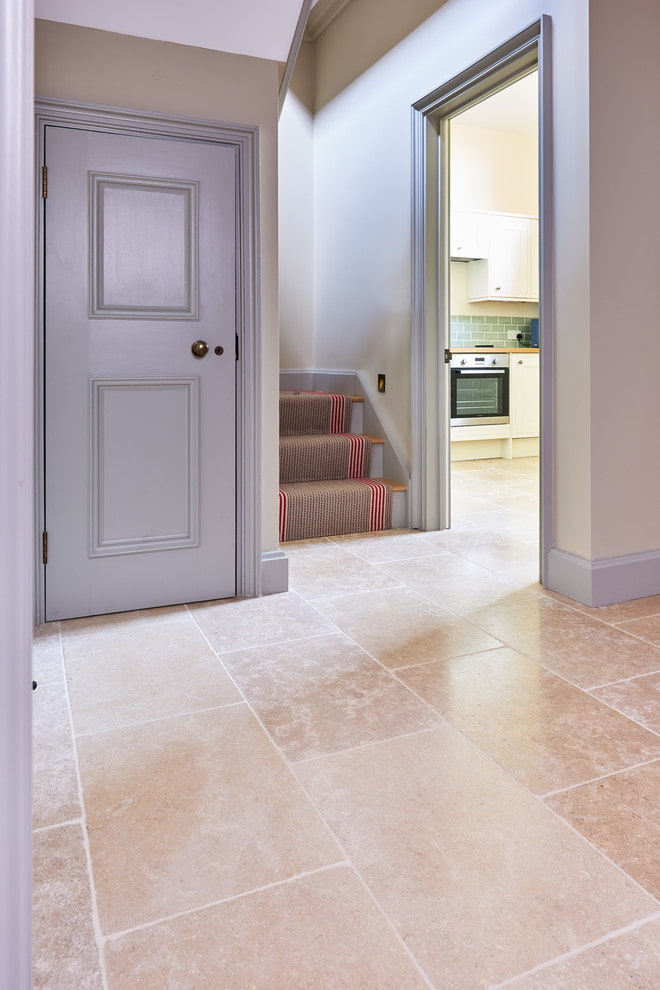

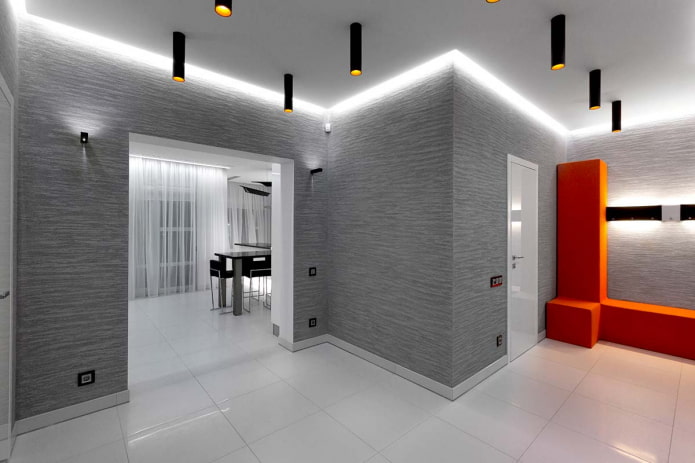
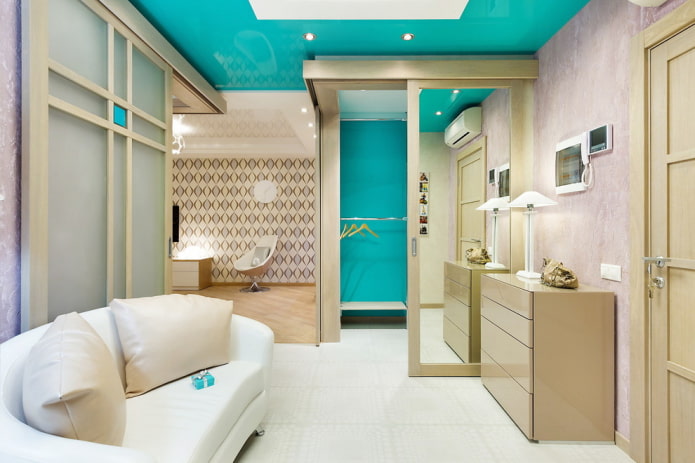
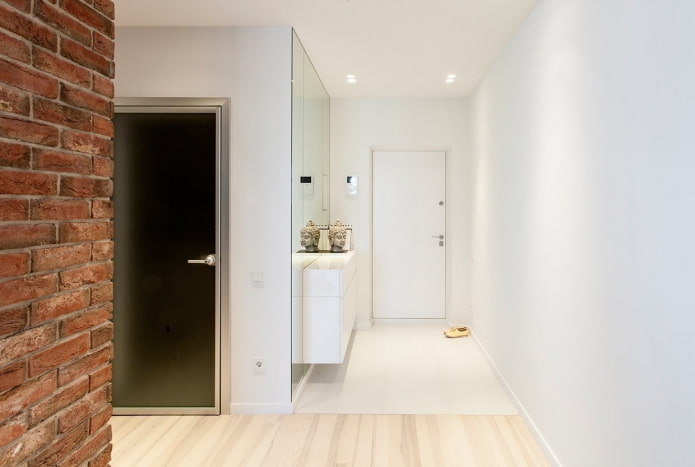


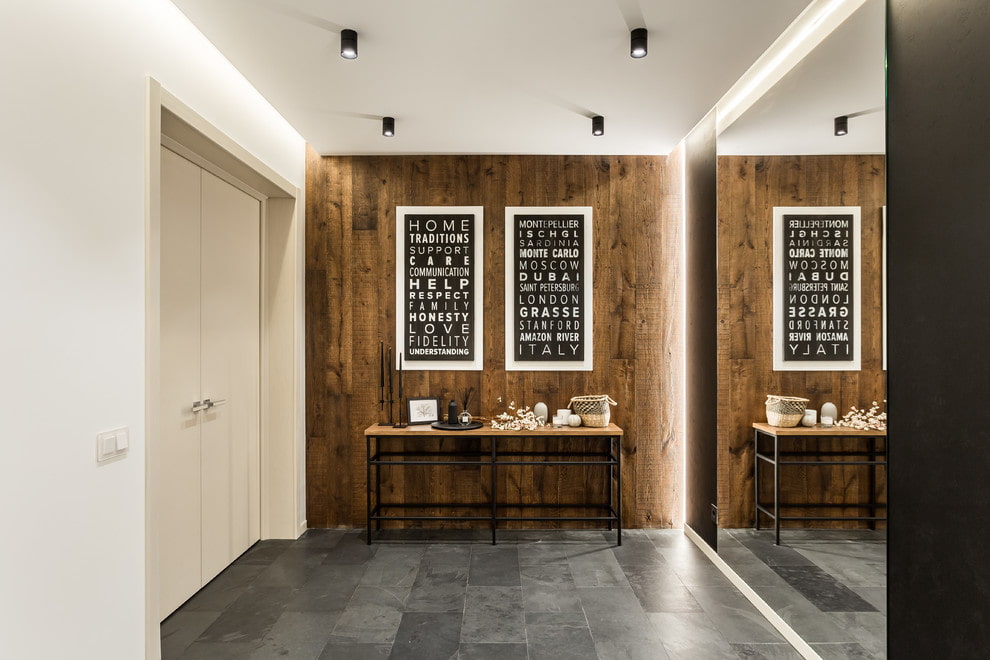

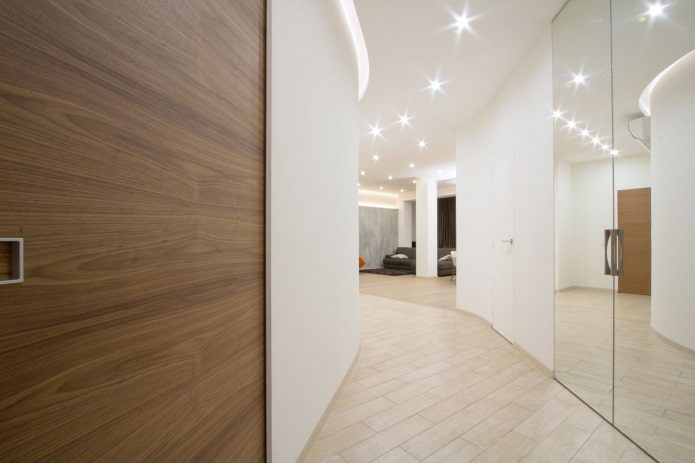
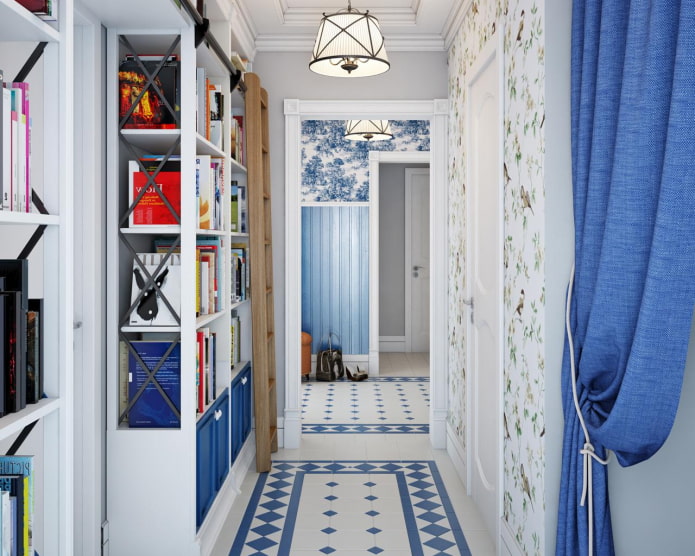
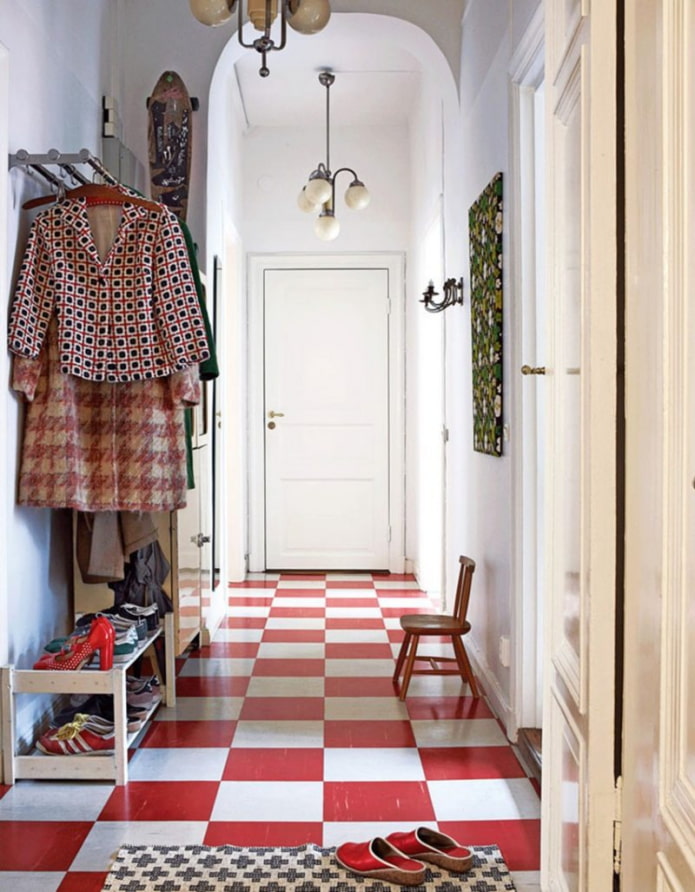


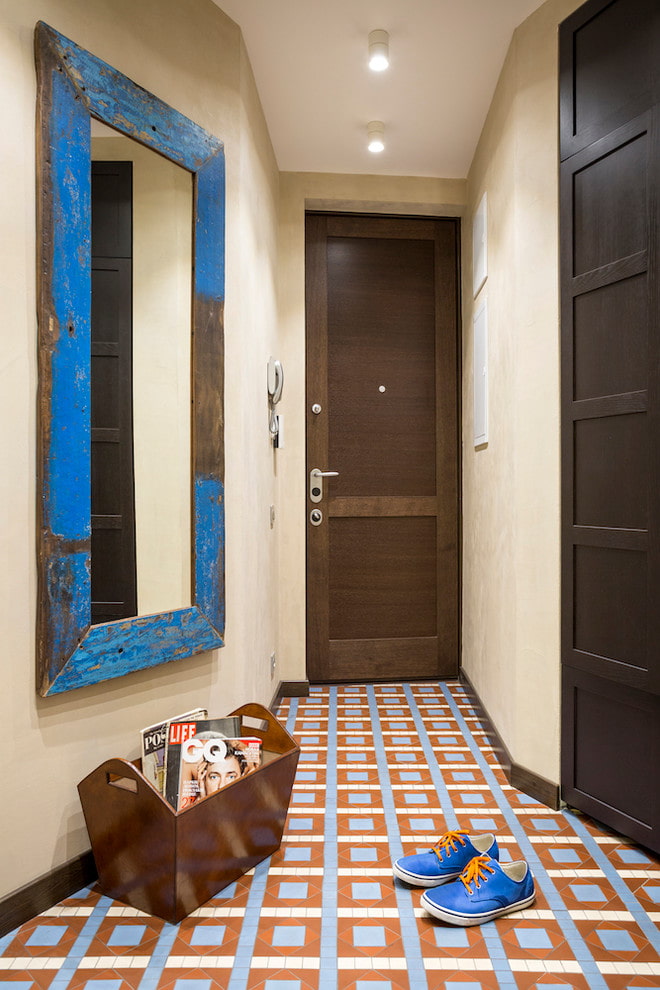
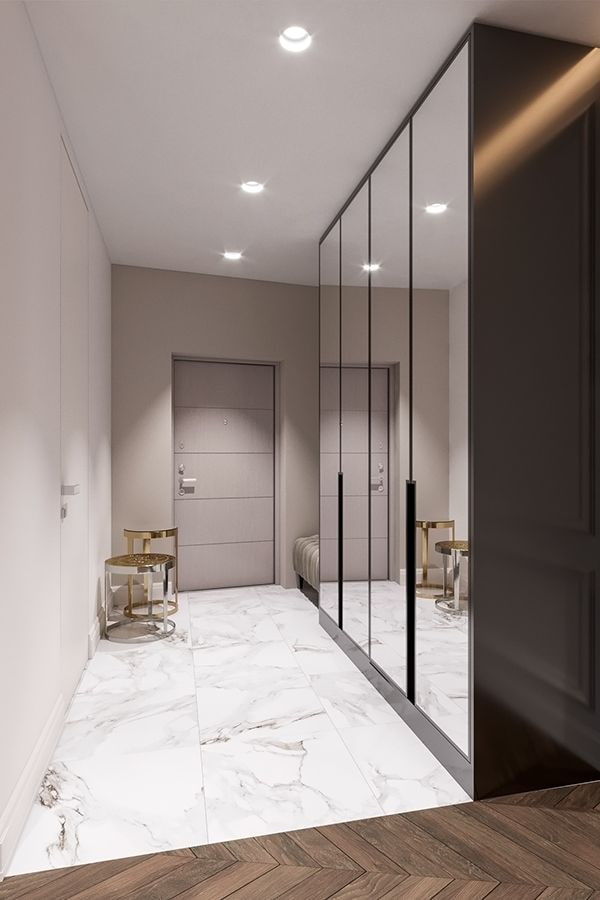
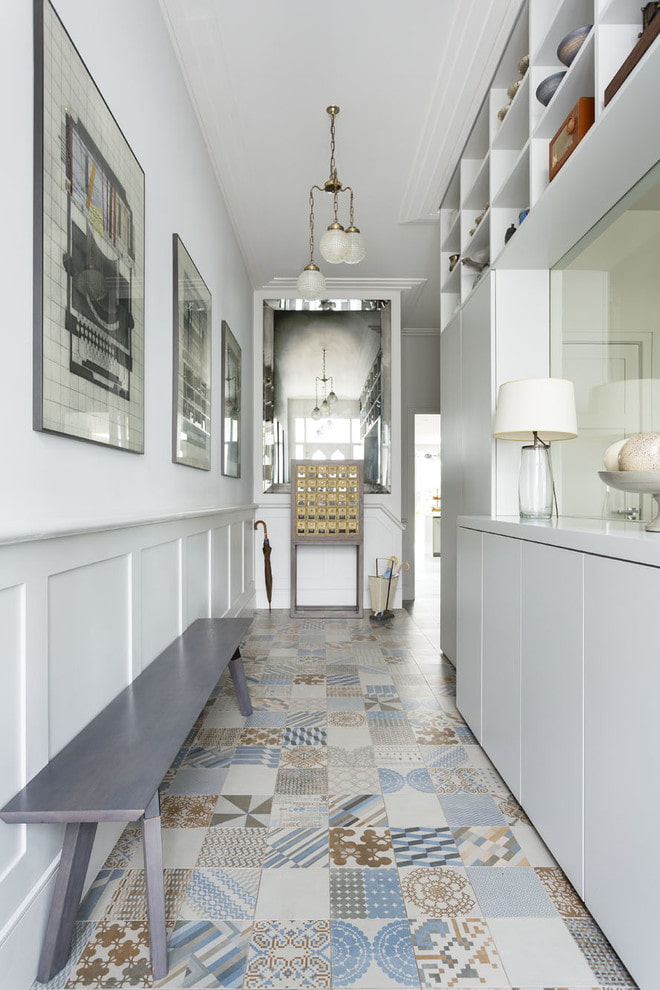
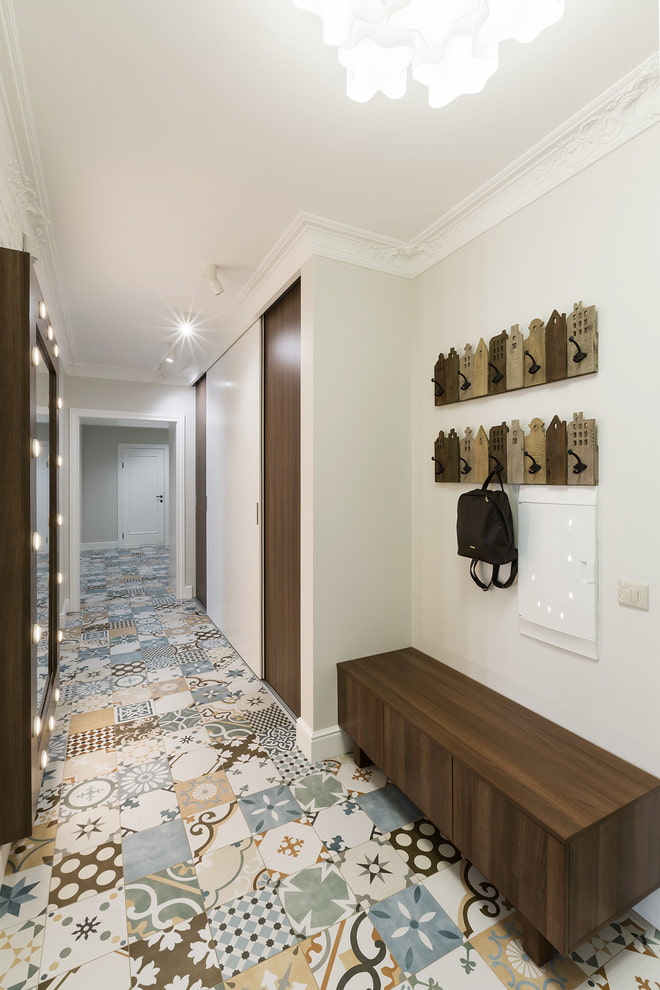
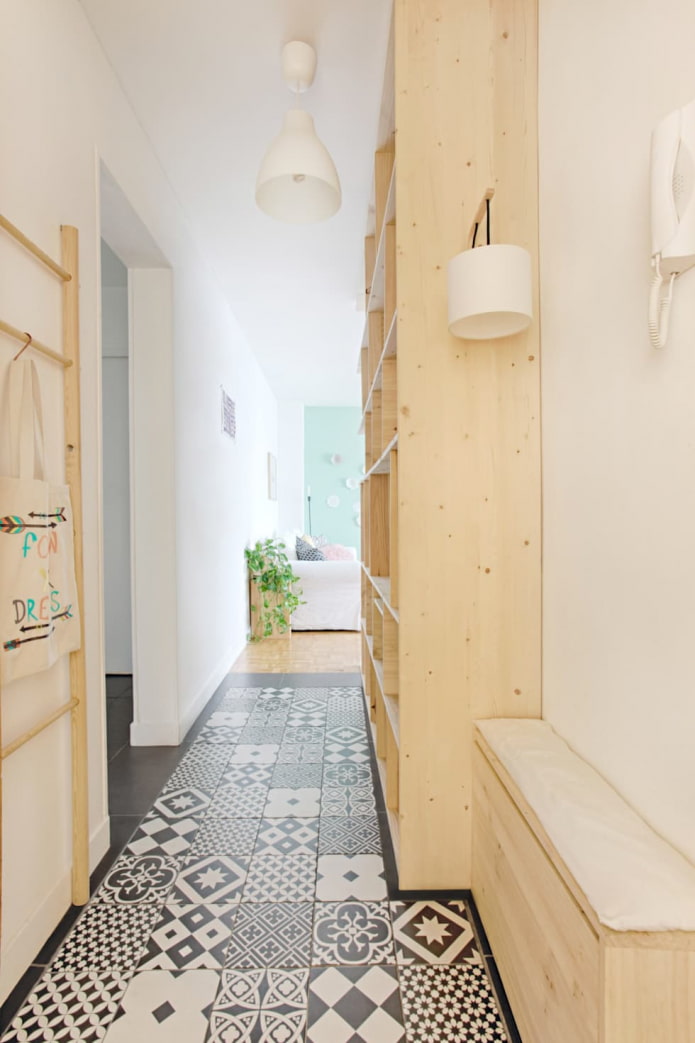
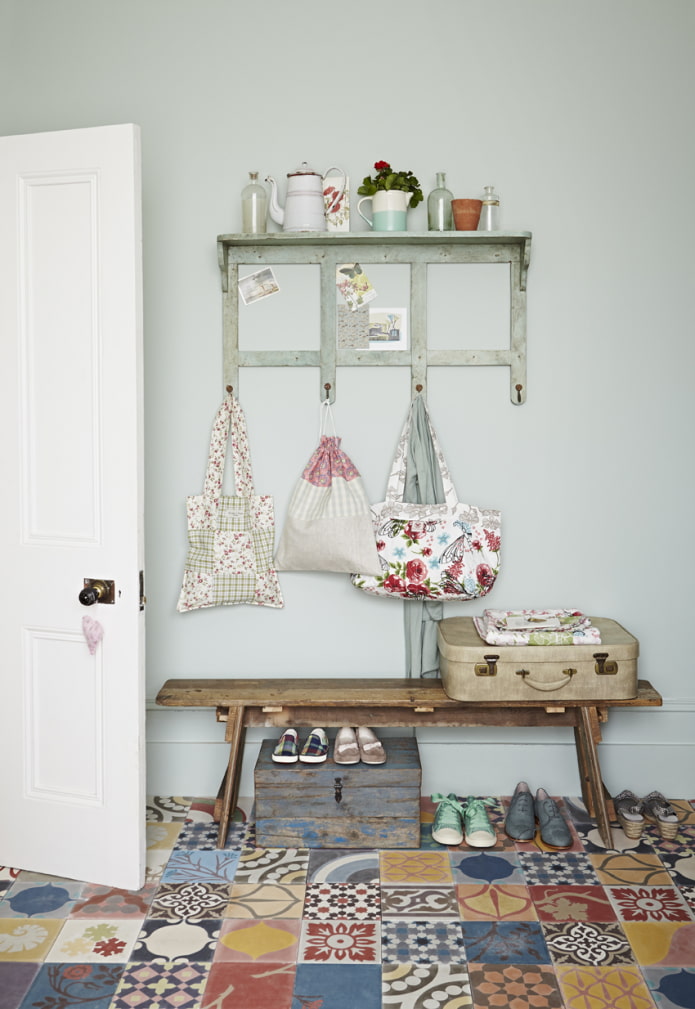
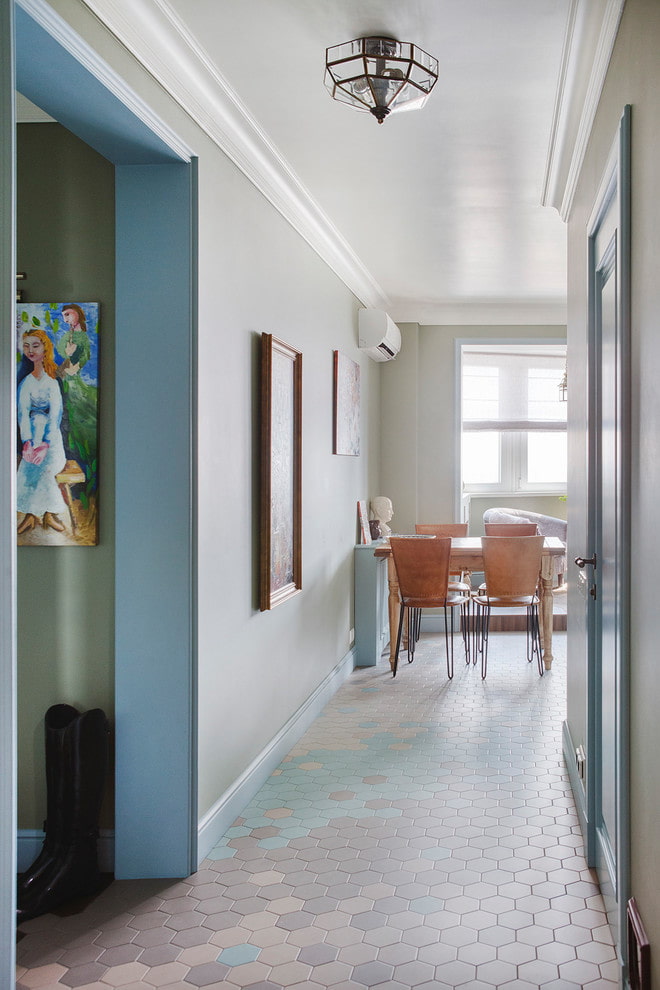
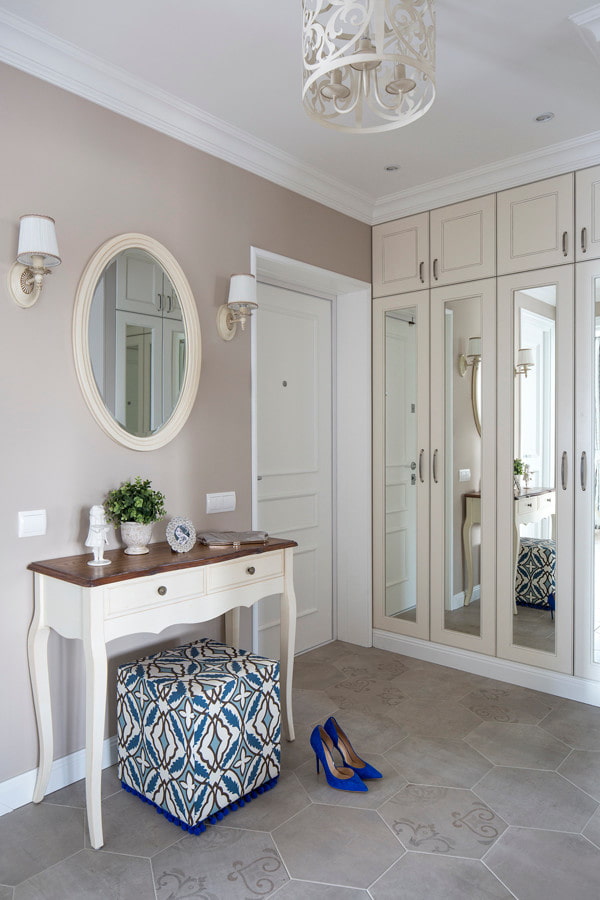
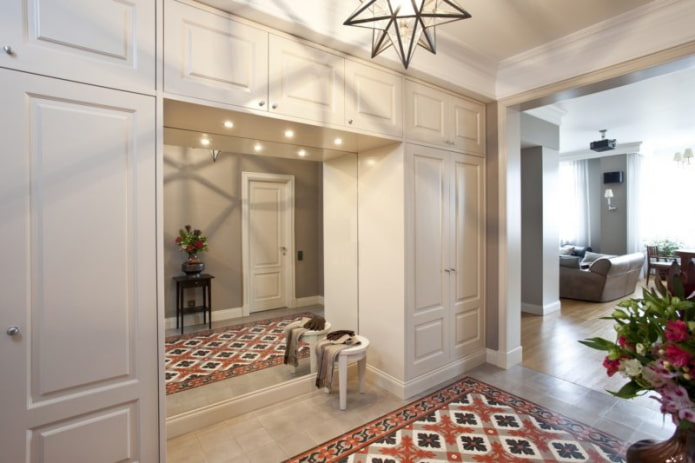
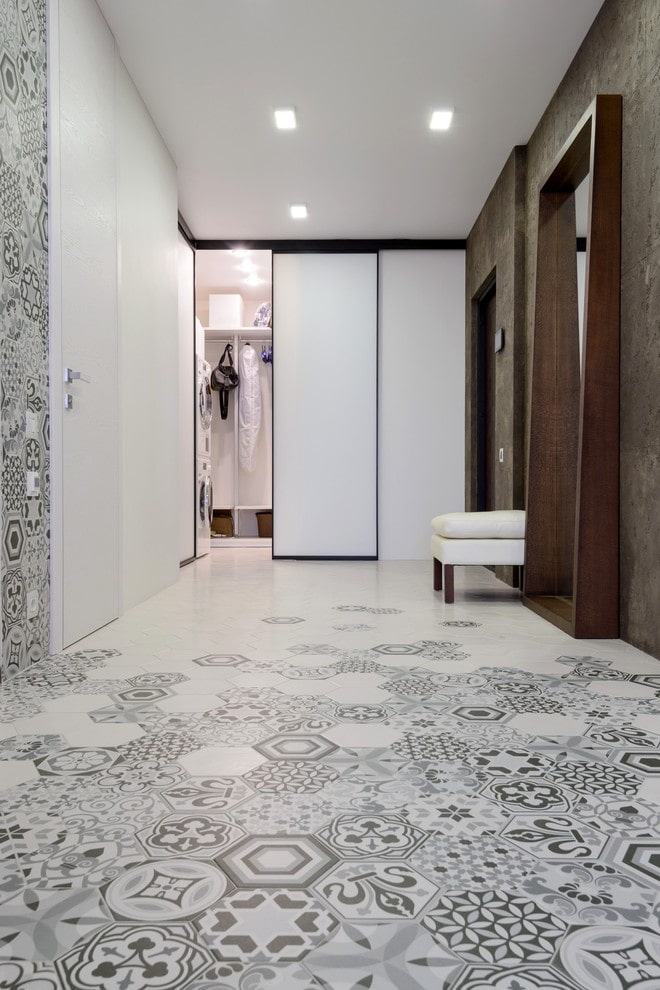
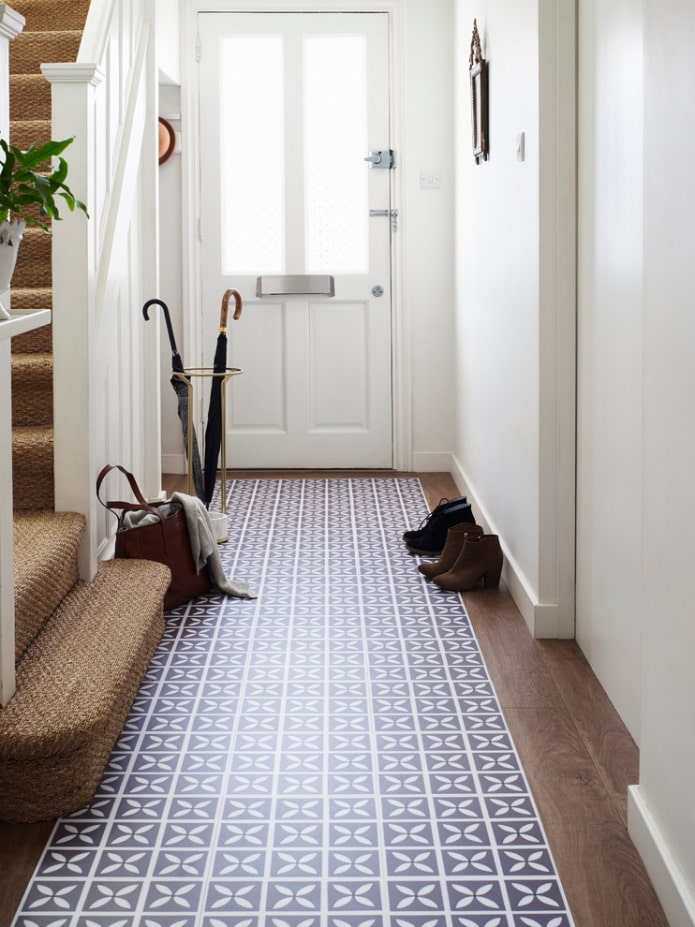
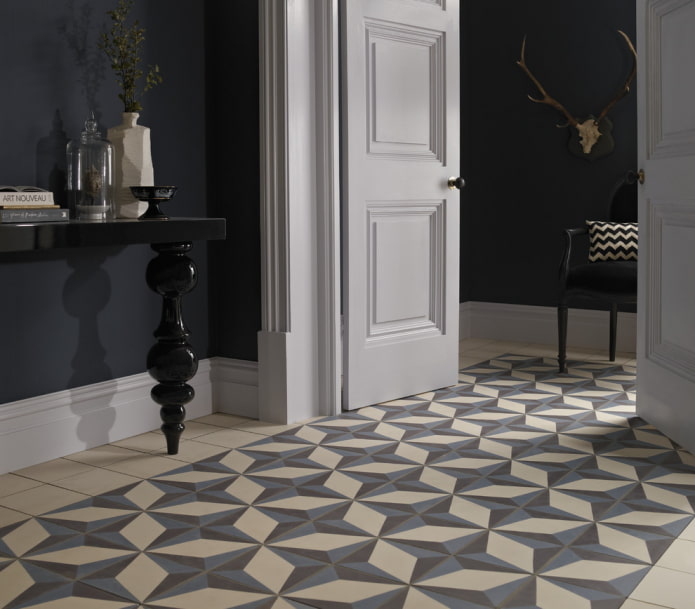


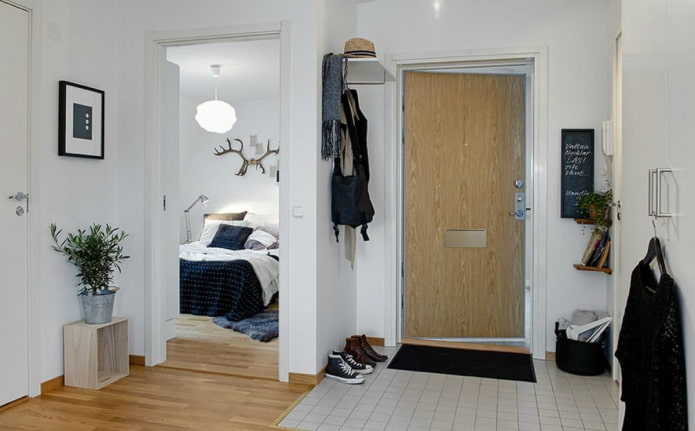
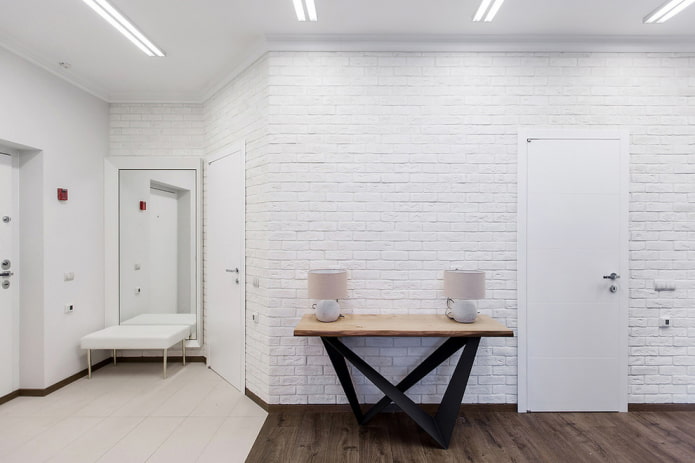
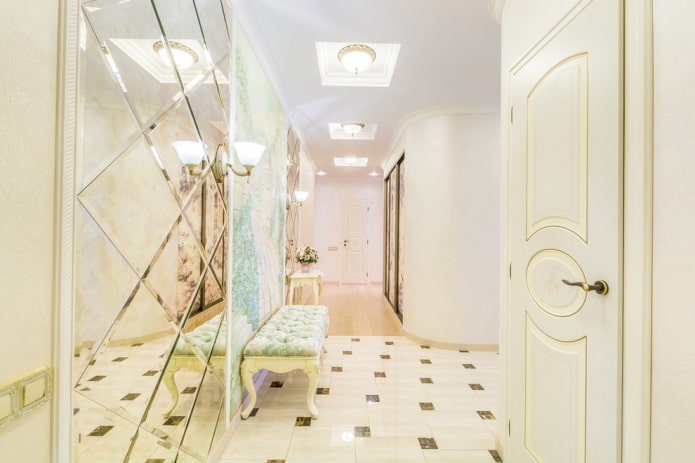

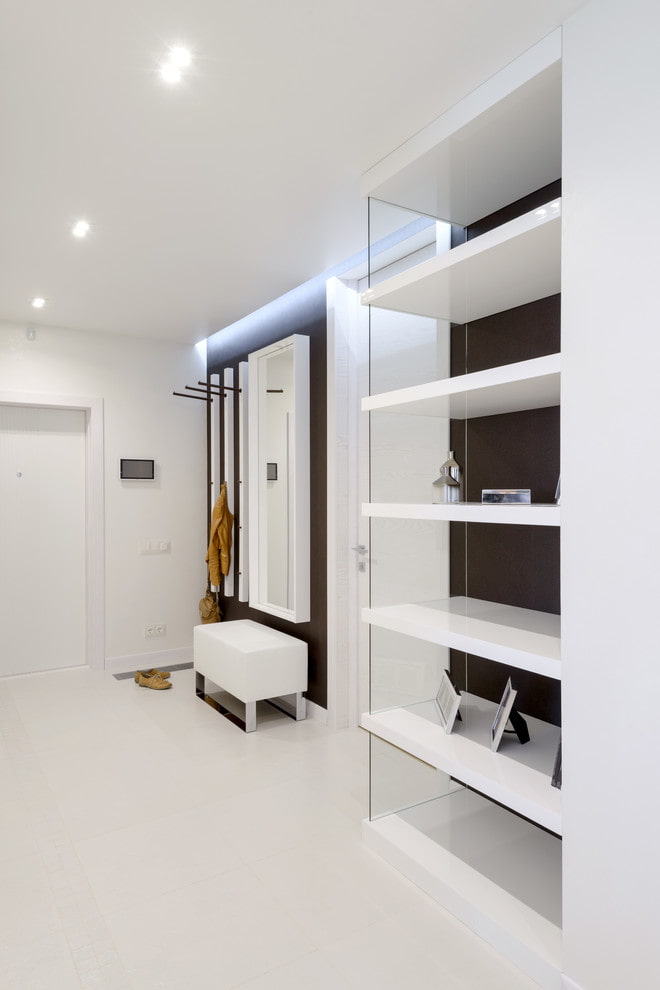
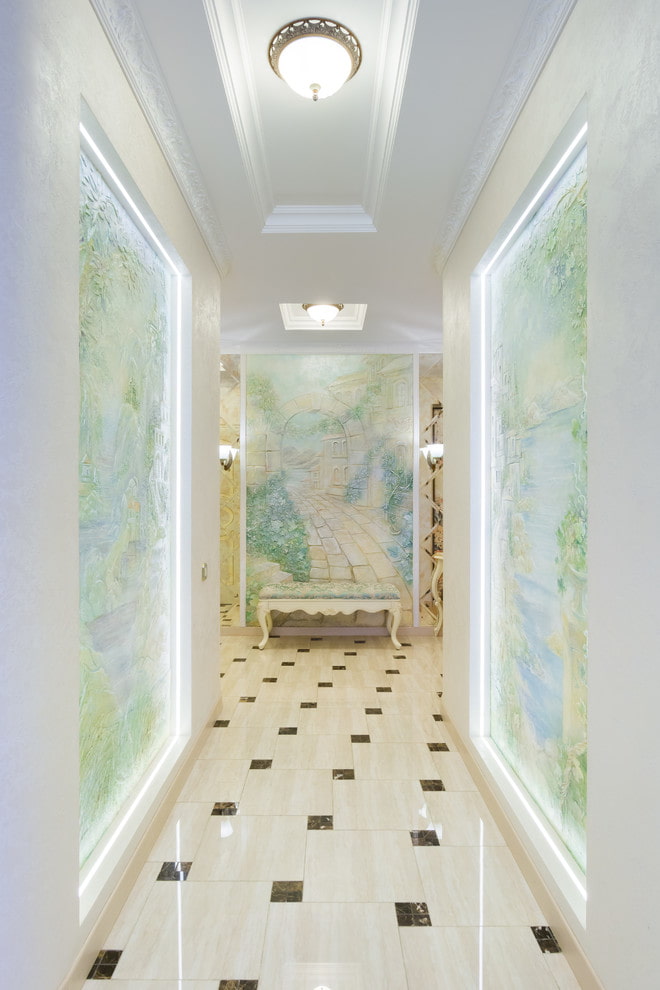
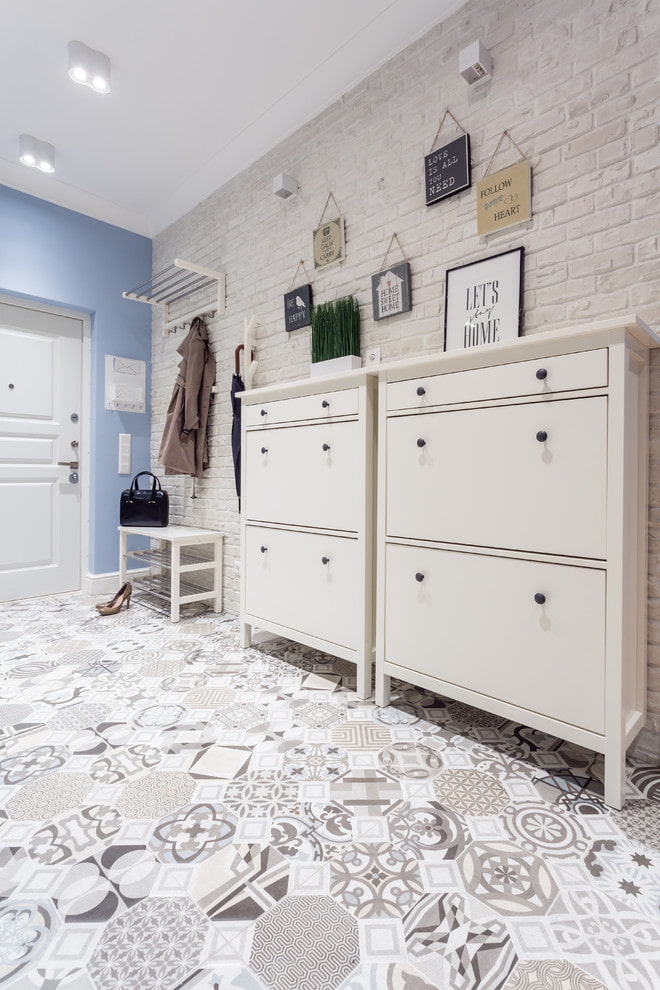
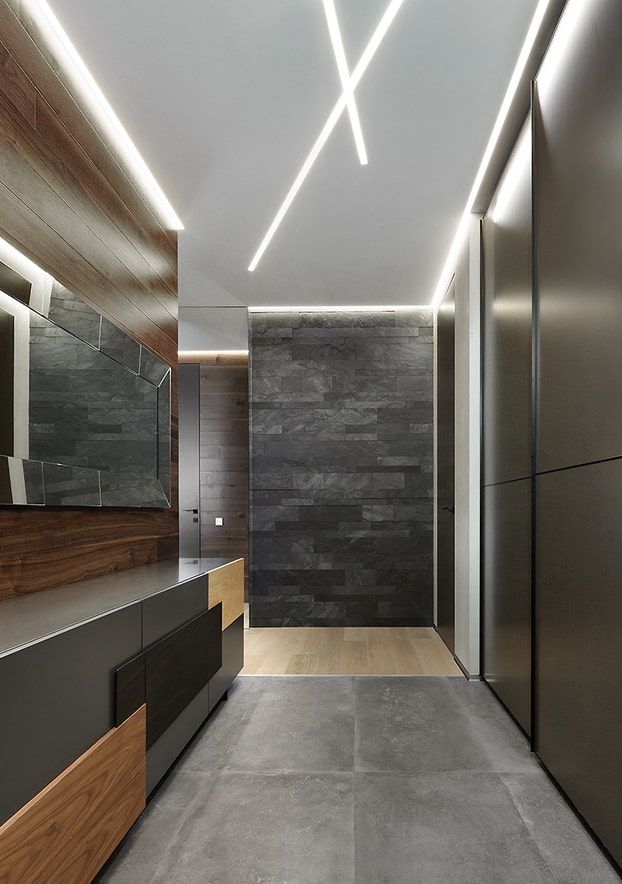
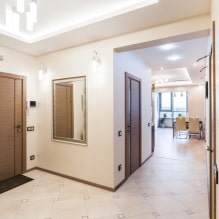

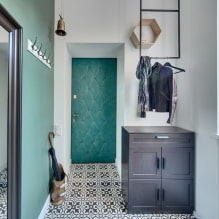
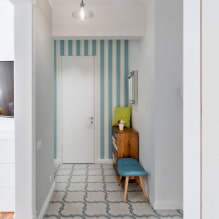
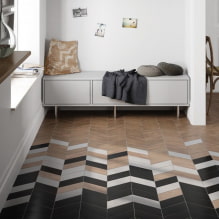
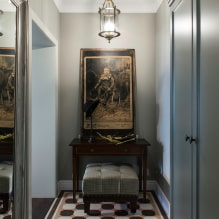
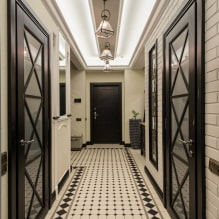
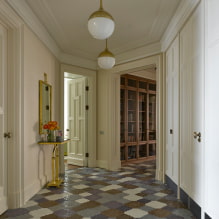
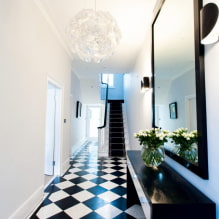

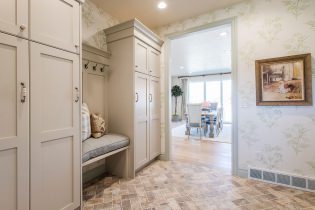 How to choose a wallpaper for a small hallway: 70 ideas for design
How to choose a wallpaper for a small hallway: 70 ideas for design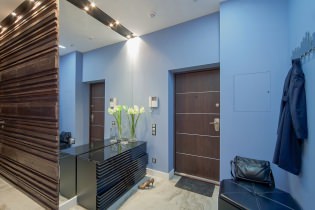 How to make an entrance hall in an apartment: design ideas, layout and arrangement
How to make an entrance hall in an apartment: design ideas, layout and arrangement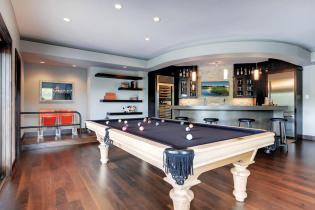 Interior billiard room in the house: the rules of design, photo
Interior billiard room in the house: the rules of design, photo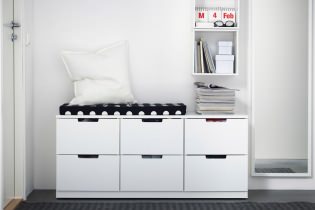 Hallway design in white
Hallway design in white The most beautiful pools in the world
The most beautiful pools in the world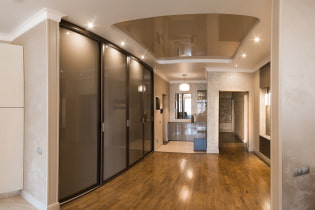 Ceiling in the corridor: types, color, design, curly structures in the hallway, lighting
Ceiling in the corridor: types, color, design, curly structures in the hallway, lighting